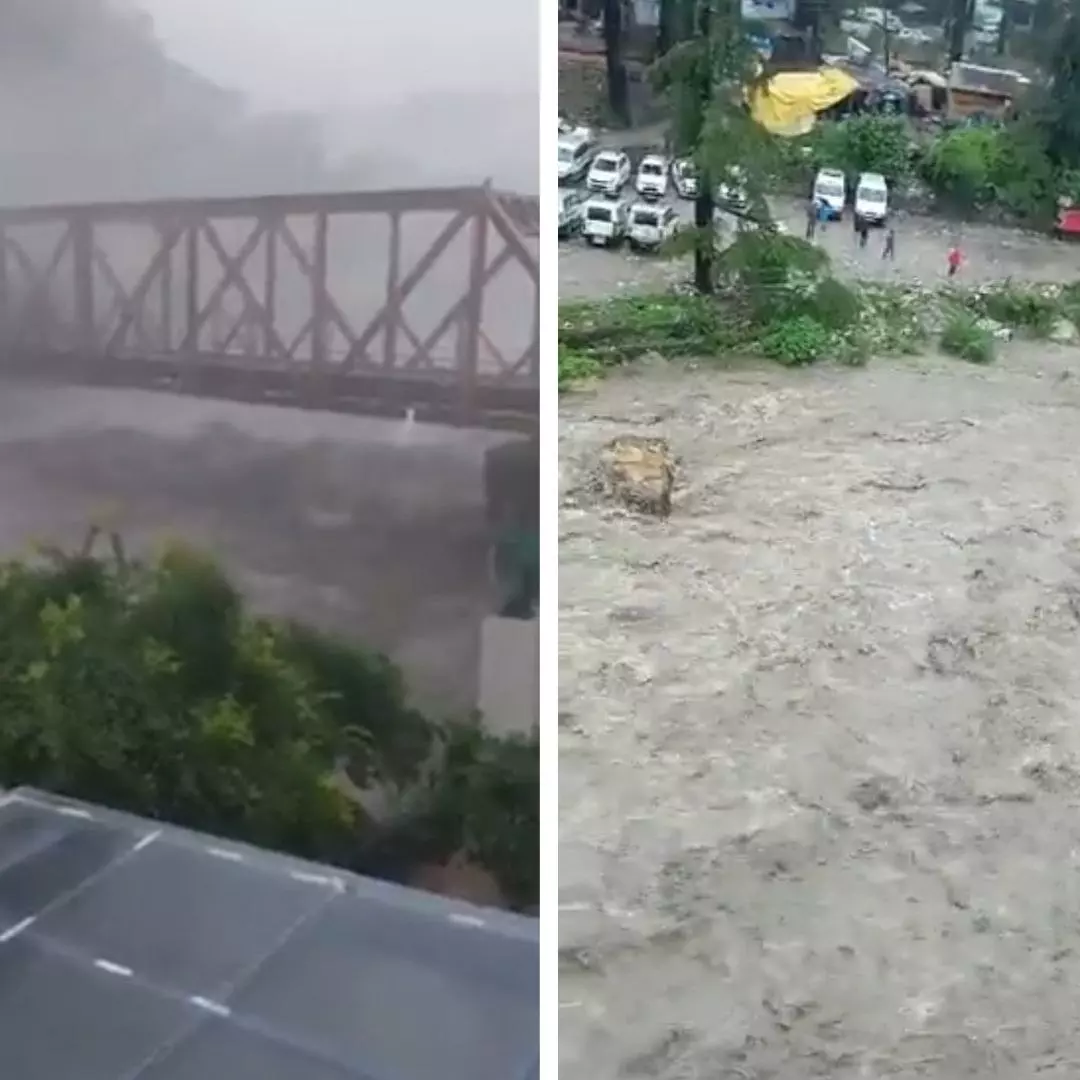
Image Credits: Twitter
72 Percent Districts In India Exposed To Extreme Floods: CEEW Report
Writer: Ankita Singh
A literature lover who likes delving deeper into a wide range of societal issues and expresses her opinions about the same. Keeps looking for best-read recommendations while enjoying her coffee and tea.
India, 15 July 2023 6:59 AM GMT
Editor : Al Arafat Sherfuddeen |
Passionate writer about current events, politics and happenings nationally and globally. An agent of communal harmony and an ardent Arsenal fan.
Creatives : Ankita Singh
A literature lover who likes delving deeper into a wide range of societal issues and expresses her opinions about the same. Keeps looking for best-read recommendations while enjoying her coffee and tea.
The report reveals that despite 72 percent of districts in the country being exposed to extreme flood events, only 25 percent of them have operational flood forecasting stations or EWS.
A recent report by The Council on Energy Environment and Water (CEEW), an independent policy research think tank, has highlighted a concerning lack of flood early warning systems (EWS) in India. The report reveals that despite 72 percent of districts in the country being exposed to extreme flood events, only 25 percent of them have operational flood forecasting stations or EWS.
Surprisingly, states such as Assam, Bihar, Uttar Pradesh, Odisha, and Sikkim, which face high exposure to floods, are leading in terms of flood early warning systems. On the other hand, Himachal Pradesh, currently grappling with massive floods, is among the states with the lowest availability of EWS. Uttarakhand, despite moderate exposure to extreme flood events, boasts a high availability of flood EWS.
The report also highlights the moderately exposed nature of Delhi to extreme floods. The city's flood resilience through EWS is also categorized as moderate. It is estimated that approximately 66 percent of individuals in India are exposed to extreme flood events, but only 33 percent of them are covered by flood EWS.
In terms of cyclone warnings, the report indicates that warnings are available to 100 percent of the Indian population exposed to cyclones and their impacts. However, when it comes to floods, the data reveals a significant gap in planning for installing flood monitoring and forecasting stations across the country.
Flood Earning Warning System
According to the CEEW, 12 states, including Uttar Pradesh, Himachal Pradesh, Assam, Jharkhand, Odisha, West Bengal, Andhra Pradesh, Telangana, Tamil Nadu, Karnataka, Goa, and Bihar, face high exposure to extreme flood events. Out of these, only Uttar Pradesh, Assam, and Bihar have a high availability of flood early warning systems. Odisha has moderate EWS availability, while the remaining states have low availability, reported Outlook.
Sikkim, Uttarakhand, Arunachal Pradesh, Kerala, Maharashtra, Tripura, Mizoram, Nagaland, Rajasthan, Madhya Pradesh, Gujarat, Delhi, Jammu and Kashmir, and Haryana are moderately exposed to extreme floods. Among these states, Sikkim, Uttarakhand, Arunachal Pradesh, Kerala, and Maharashtra have a high availability of flood early warning systems, while the rest have moderate resilience through flood EWS. Tamil Nadu, Himachal Pradesh, Karnataka, and Telangana have the lowest availability of flood EWS.
The report emphasizes the importance of making flood early warning systems accessible to all in India, especially in the states and districts most exposed to flood impacts. Recent flooding incidents in various parts of the country, along with Cyclone Biparjoy, highlight the critical need for investment in early warning systems. Dr. Vishwas Chitale, senior program lead at CEEW, emphasizes the significance of leveraging advanced technologies to establish inclusive, impact-based multi-hazard early warning systems involving local communities for effective communication.
As India witnesses shifting patterns in climatic extremes, with areas previously prone to drought now facing floods, enhancing early warning systems becomes crucial for safeguarding lives and livelihoods. The report emphasizes the need for intensified adaptation finance to enhance disaster preparedness. In recent days, heavy rainfall has caused extensive damage in several parts of North India, leading to flooding, landslides, and the swelling of rivers, including the Yamuna in Delhi.
The report's findings underscore the urgent need for comprehensive and widespread flood early warning systems to mitigate the devastating impacts of floods across India.
Flood Situation In Delhi
According to an official statement, Hathni Kund Barrage discharged 57363 cusecs of water at 8 PM. The Central Water Commission (CWC) forecasted that the water level at Old Railway Bridge (ORB) would reach 208.05 meters on July 14 between 10:00 PM and 12:00 AM. However, the water level dropped faster than expected.
Despite hopes of an improvement in the flood situation in Delhi following the reduction in water levels in the Yamuna river, the Indian Meteorological Department (IMD) issued a yellow alert for the city on Saturday. Moderate rainfall is predicted in Delhi over the next 4-5 days, which may dampen expectations of relief from the ongoing flooding.
As of 9 PM on Friday, the water level in the Yamuna River was recorded at 208.07 meters. The severe flooding has resulted in the evacuation of over 25,478 individuals, with 22,803 people currently housed in tents and shelters, as per a report in Livemint.
The Delhi government stated that 16 teams from the National Disaster Response Force (NDRF) have been deployed in flood-affected districts for rescue operations. Due to the high river water levels and breaches in embankments, some low-lying areas of Delhi have experienced flooding. To aid in the evacuation efforts, 45 boats, including 17 from the Boat Club and 28 from the Irrigation and Flood Control Department, are actively involved in rescue operations in Delhi.
Also Read: Monsoon Mayhem Continues In Delhi As Yamuna River Swells, Rescue Operation Underway
 All section
All section














